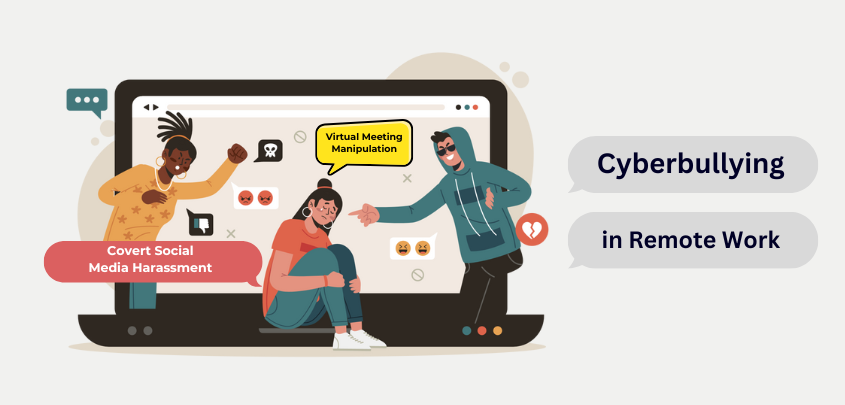
25, Nov, 2024
The Hidden Threat: Cyberbullying in Remote Work
Remote work has transformed how we connect, but it has also created new opportunities for workplace cyberbullying. These digital forms of harassment can be subtle, yet their impact on mental health and productivity is profound.
Uncommon Forms of Workplace Cyberbullying
While public shaming or exclusion in group chats are more obvious, other less-discussed forms include:
- Virtual Meeting Manipulation: Cutting someone off or muting them intentionally during online meetings.
- Intentional Delays in Responses: Ignoring messages or emails to disrupt workflow.
- Work Sabotage: Altering or deleting work on shared platforms like Google Docs.
- Covert Social Media Harassment: Posting vague, negative comments targeting coworkers on personal platforms.
- Deepfake Content Sharing: Using AI to create manipulated media to humiliate or discredit someone.
How to Handle It
- Document Everything: Keep records of messages, emails, or incidents as proof.
- Speak Up: Address the issue calmly and professionally with the individual or team lead.
- Involve HR or Leadership: If the behavior continues, escalate the matter.
- Seek Support: Consult with mental health professionals or workplace counselors if needed.
Why It Matters
Unchecked cyberbullying can lead to anxiety, low morale, and high employee turnover. Recognizing and addressing these behaviors is crucial for maintaining a healthy and respectful remote work environment.
By creating awareness and setting boundaries, we can foster digital workspaces where everyone feels valued.
Have you experienced or witnessed cyberbullying at work? Let’s start the conversation.
———-
